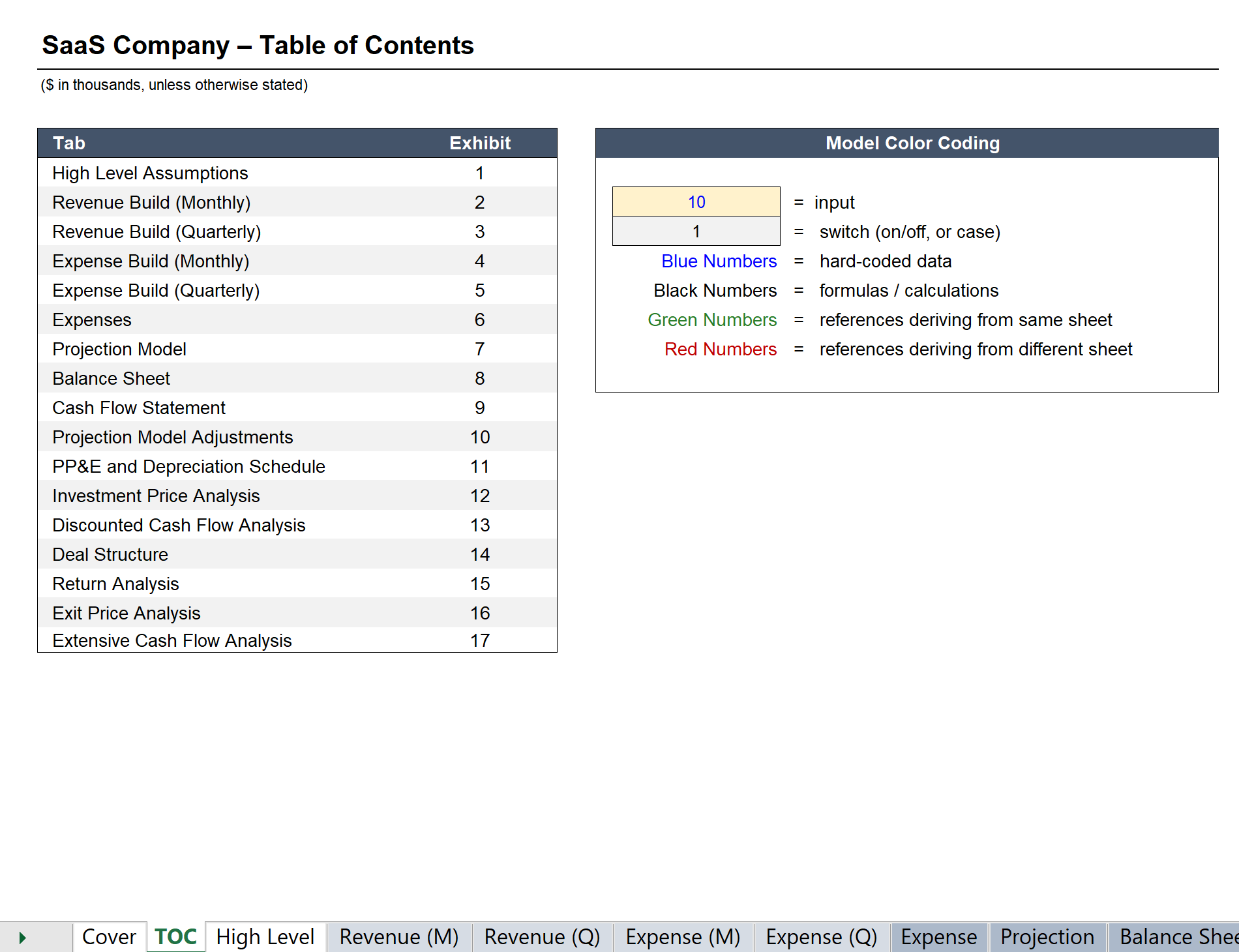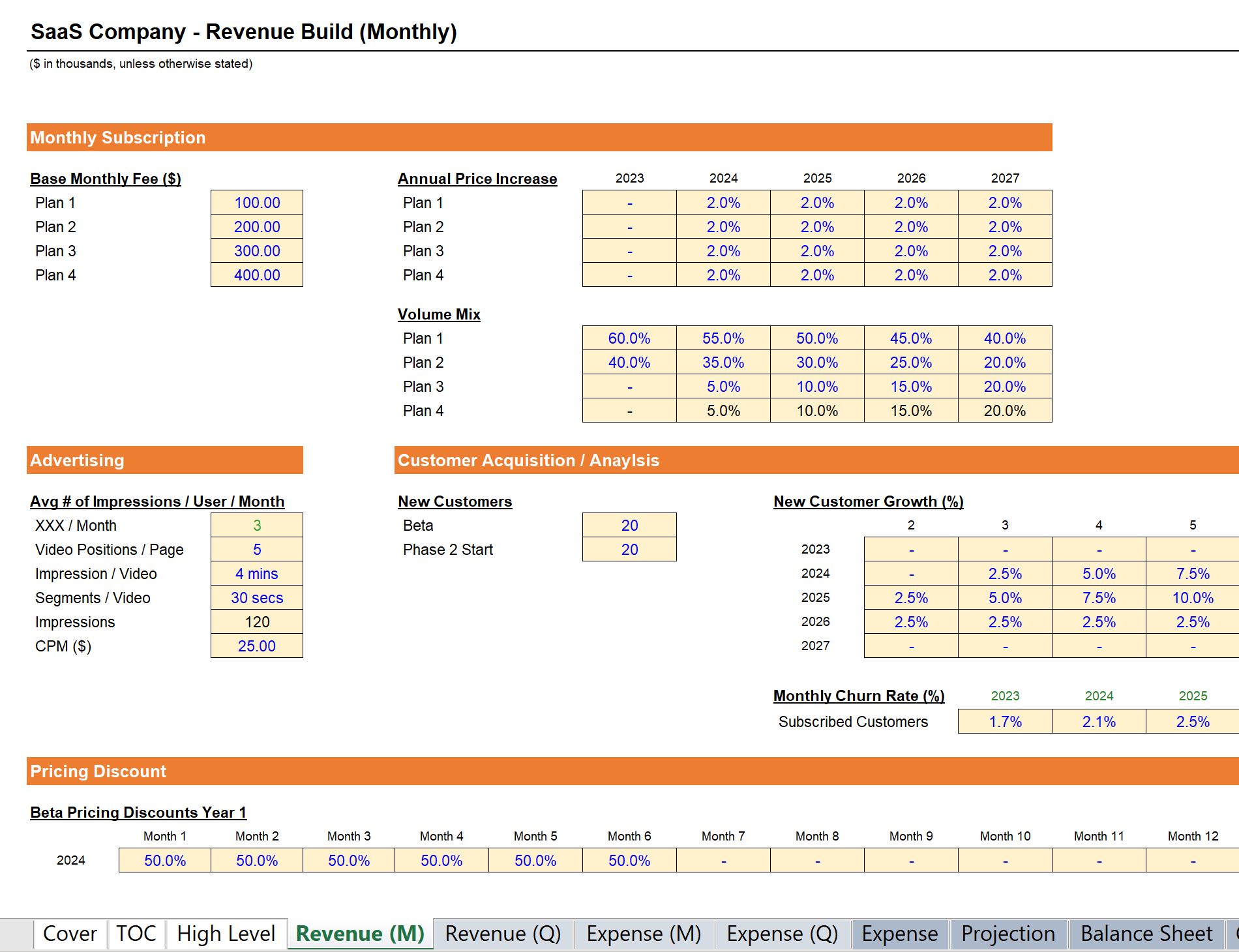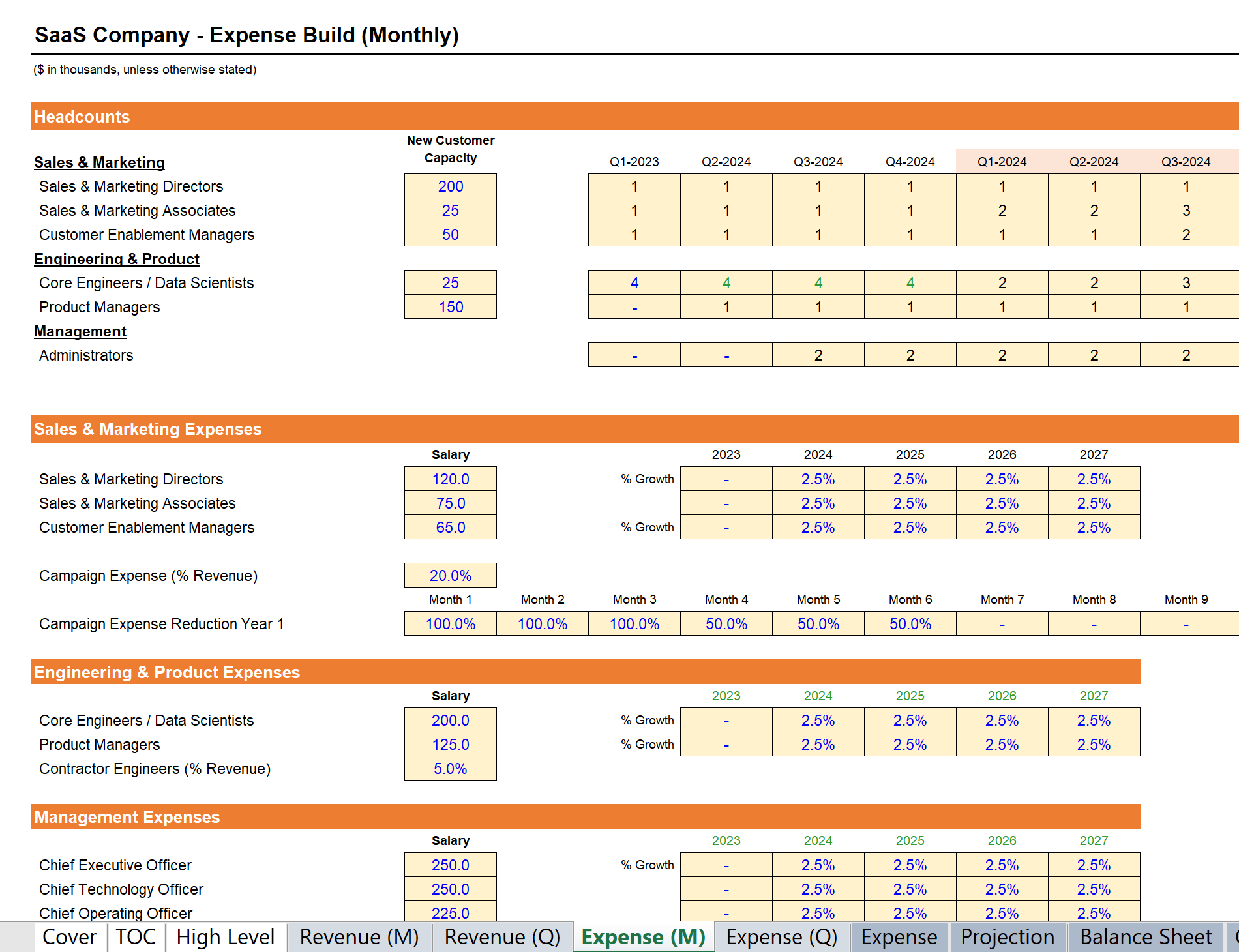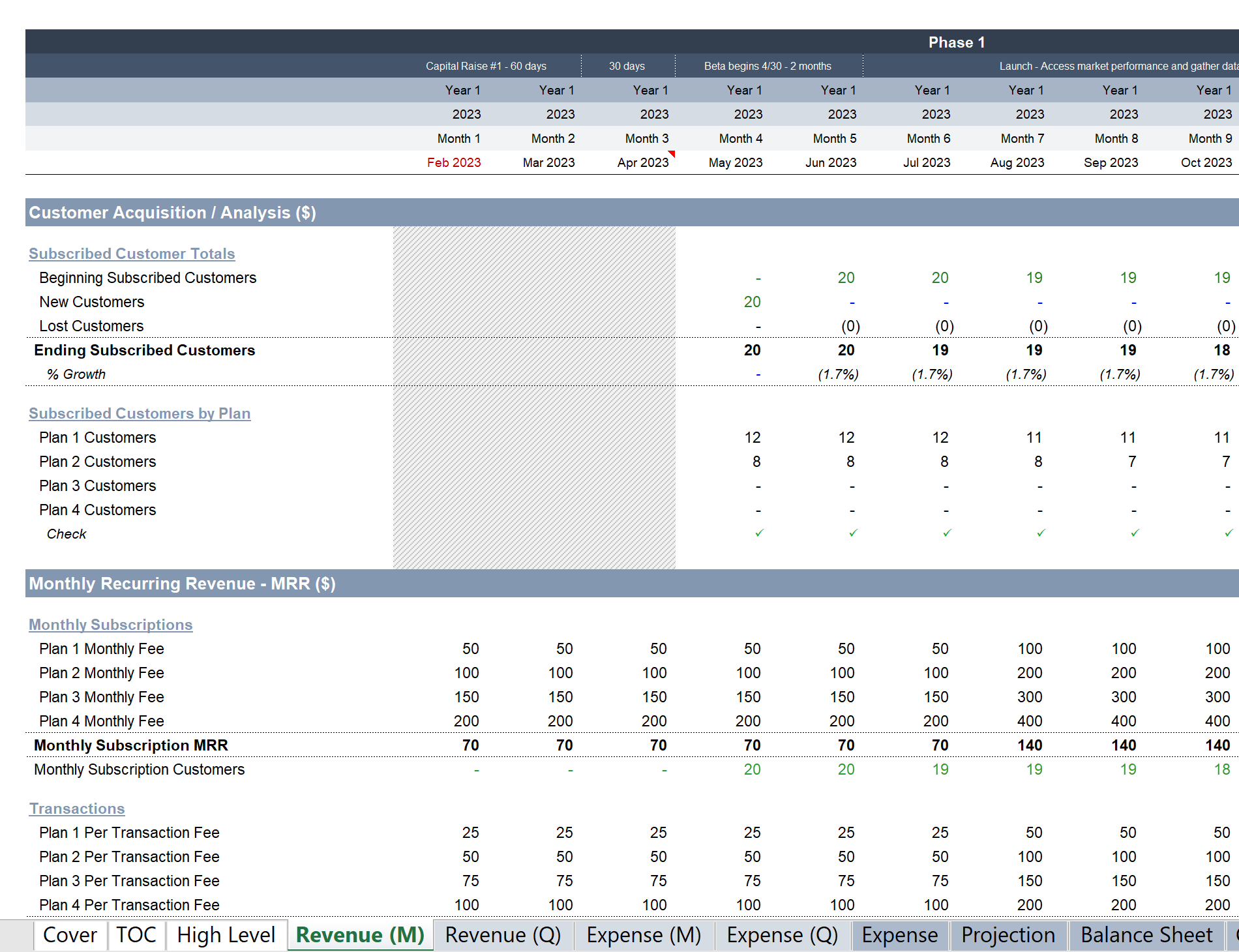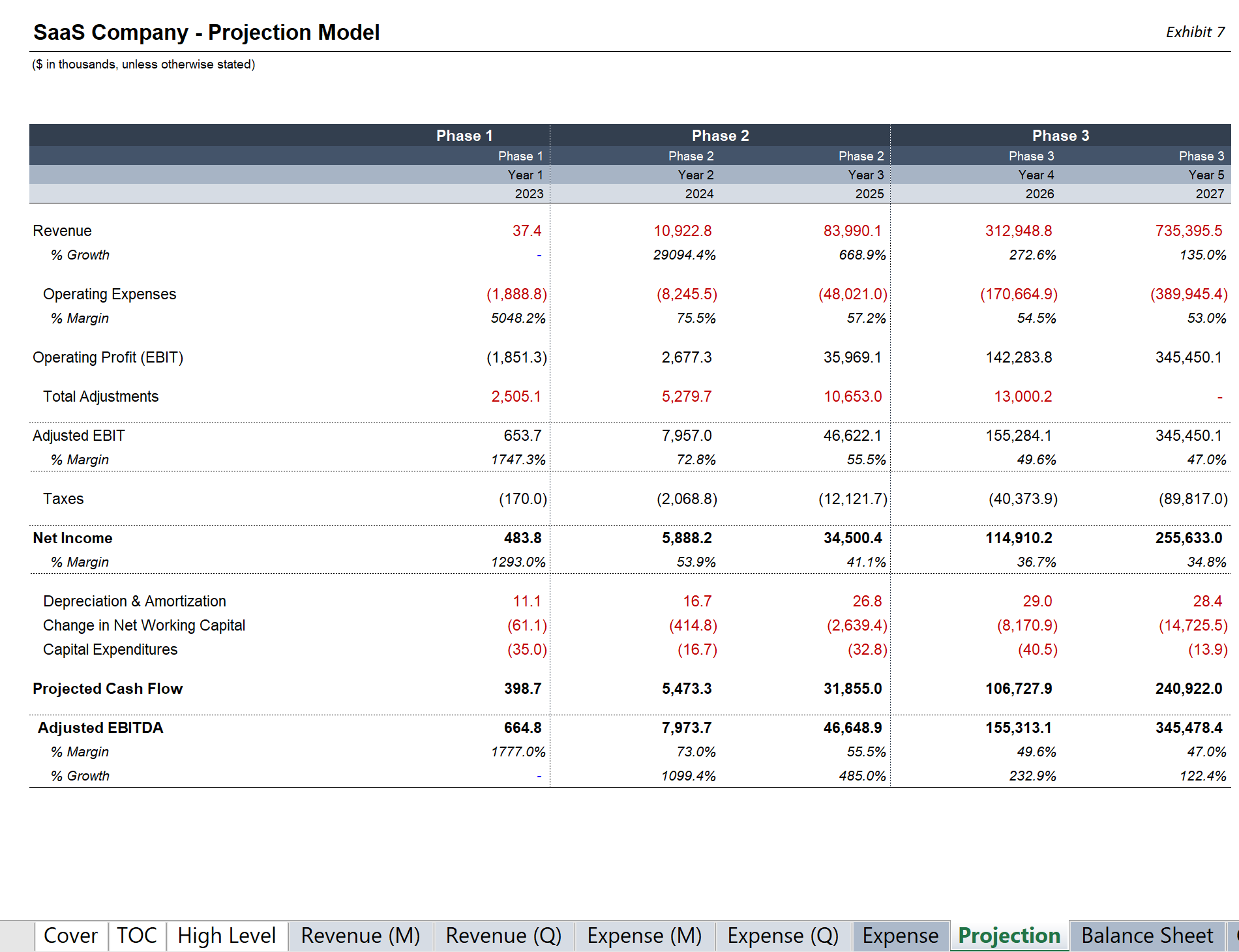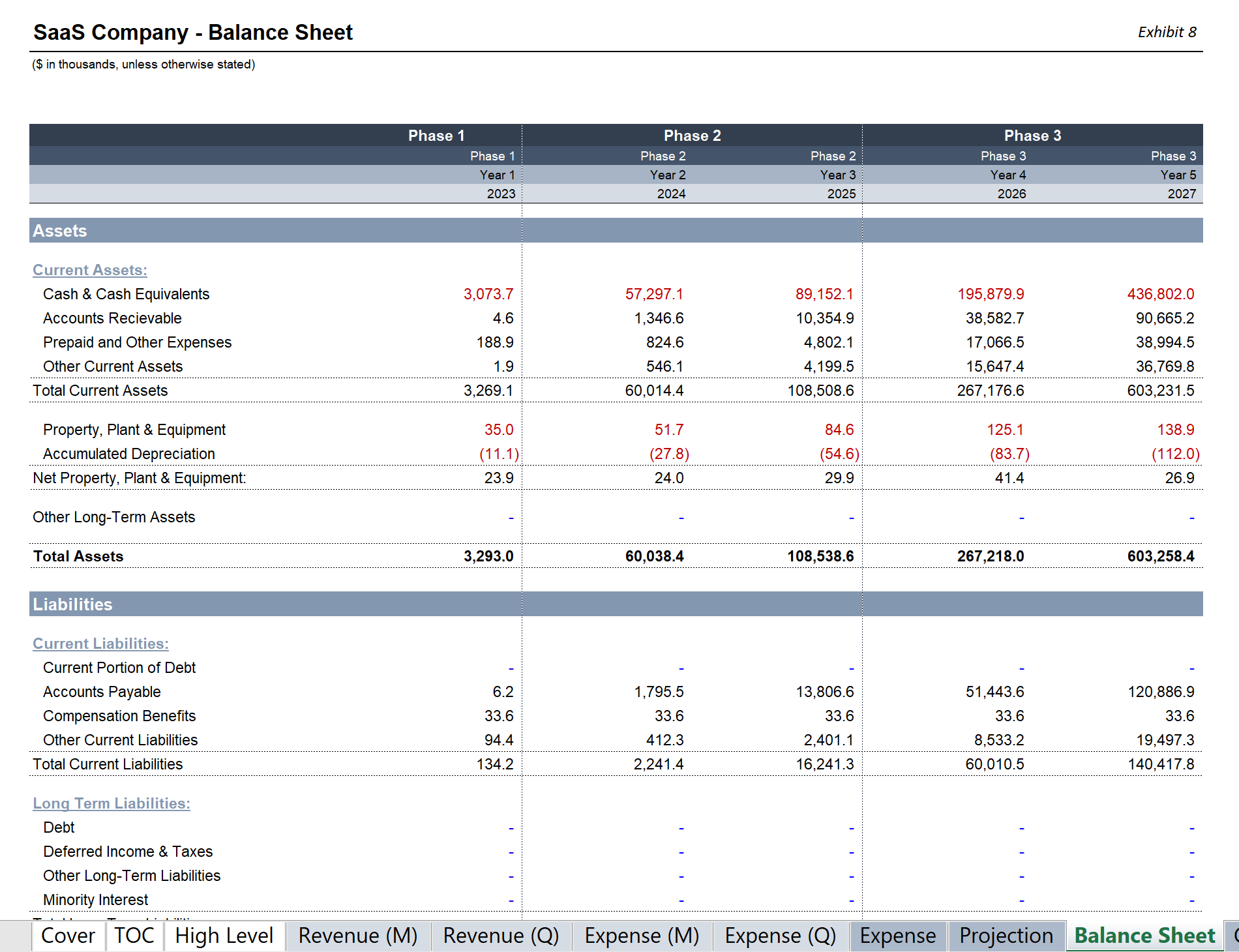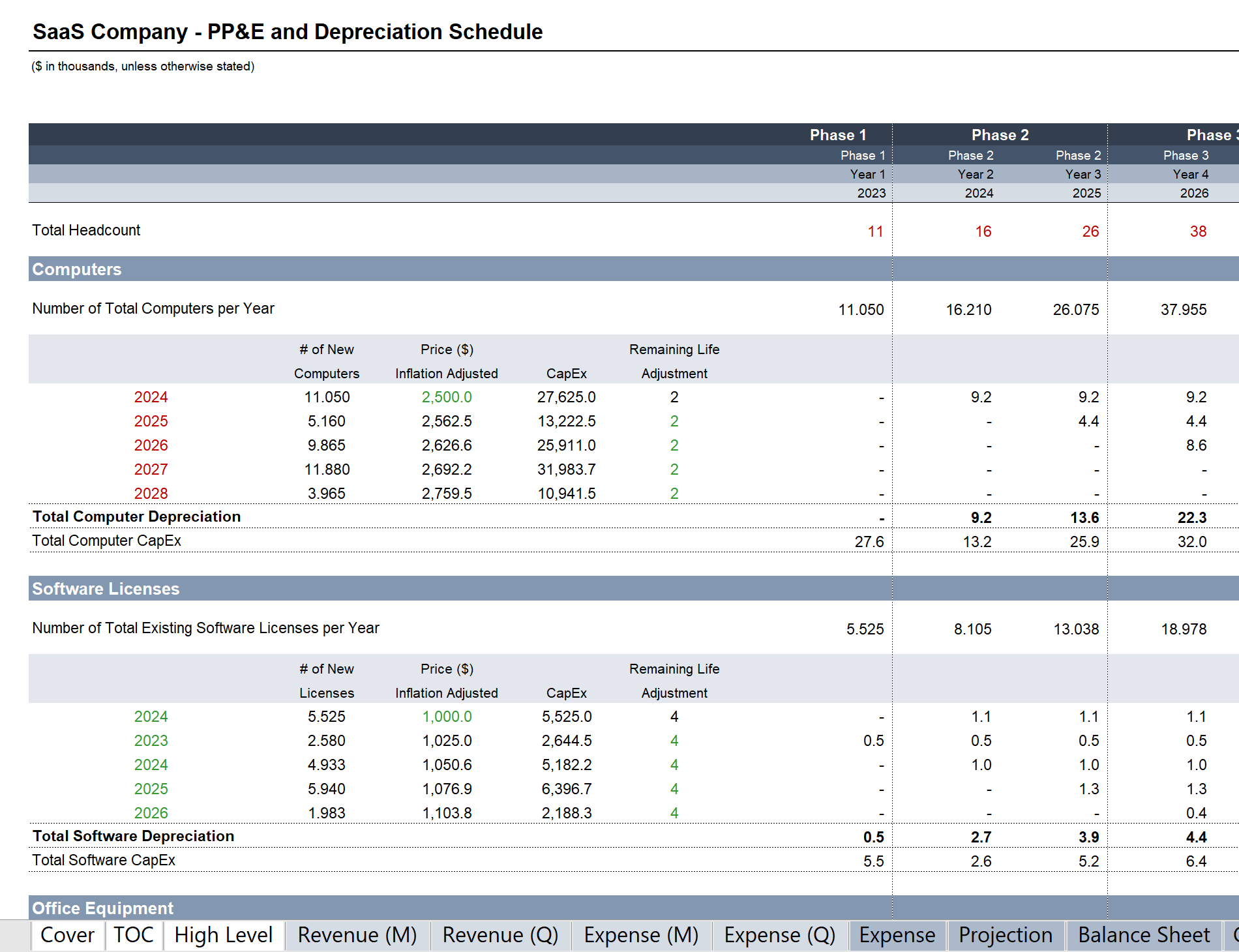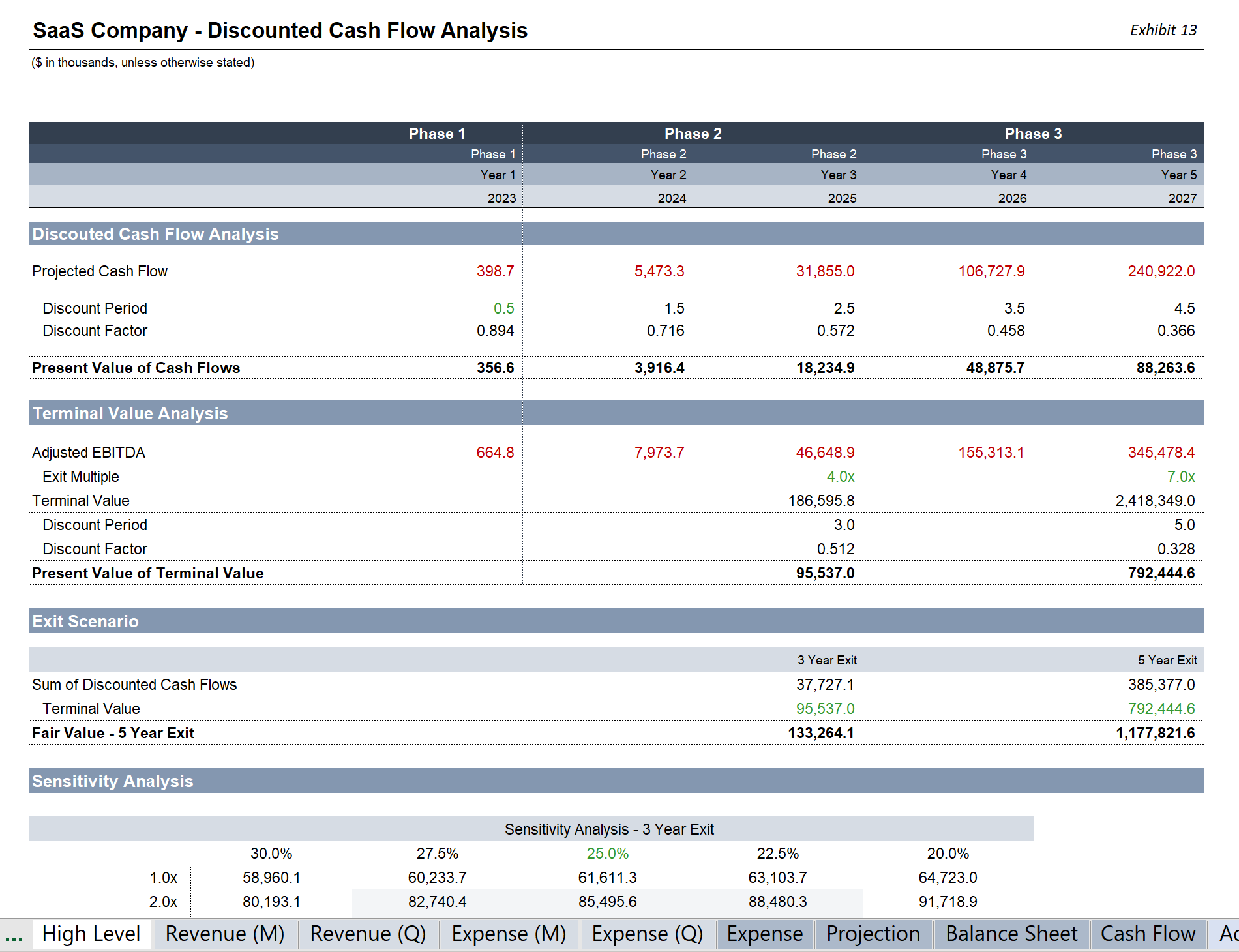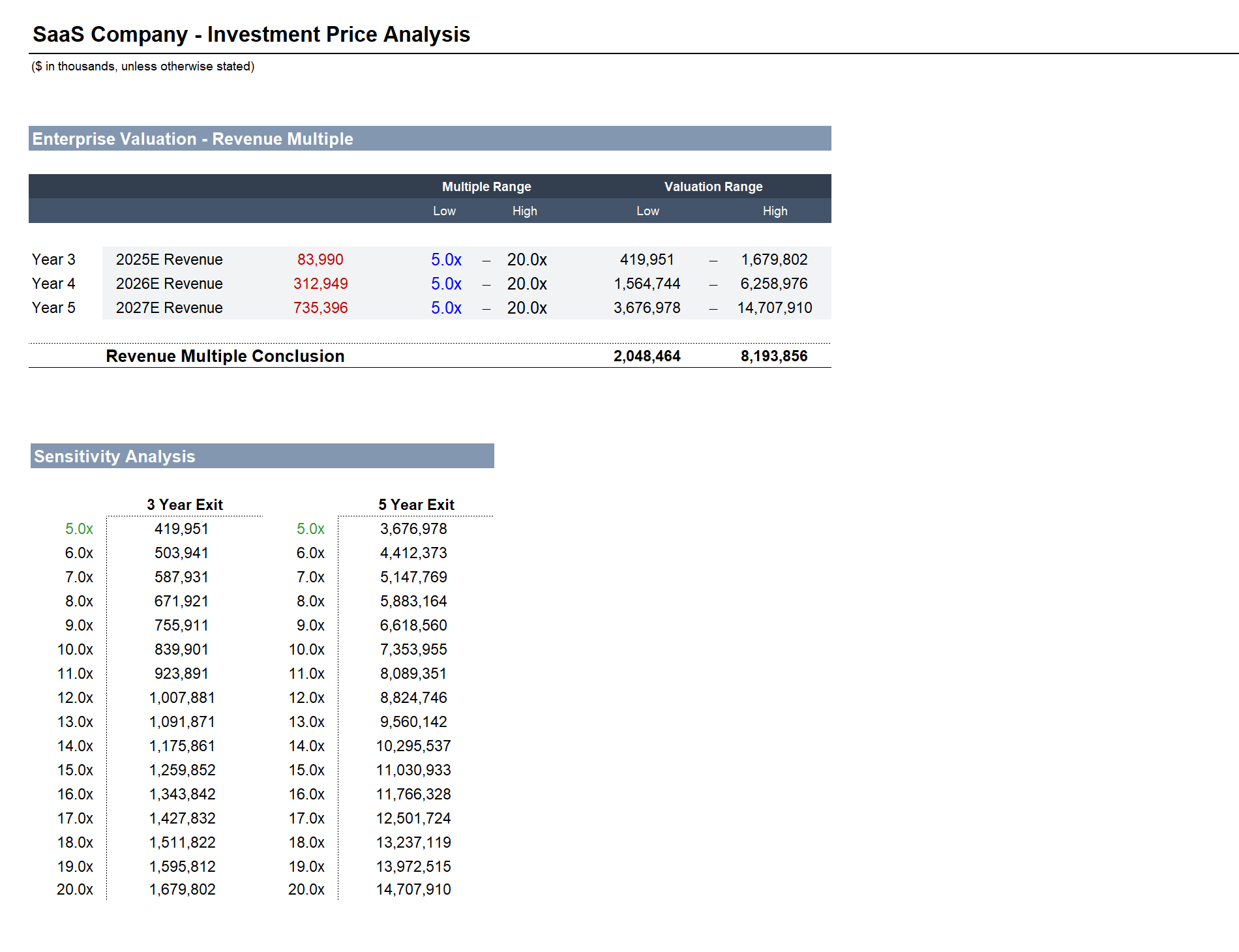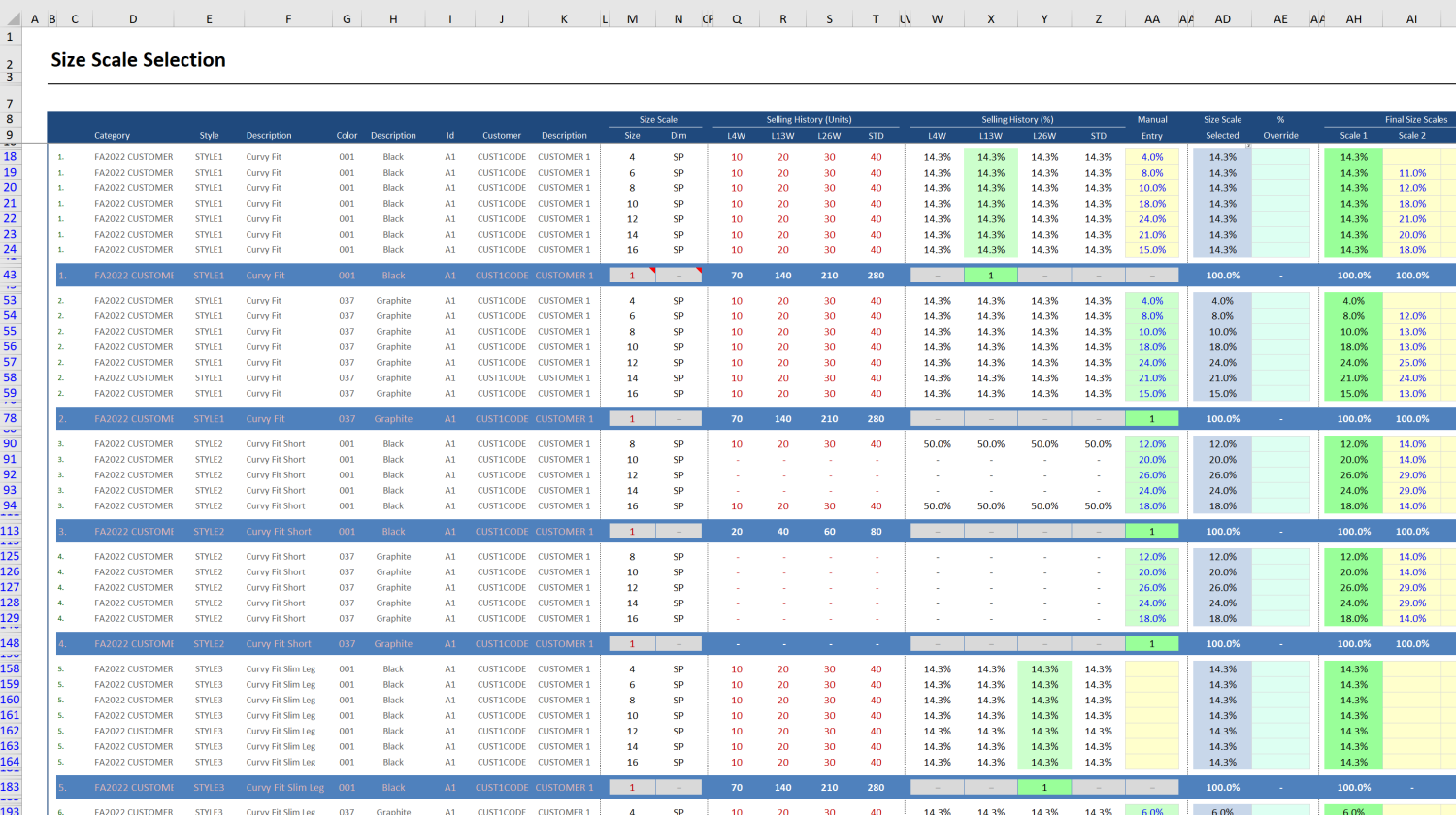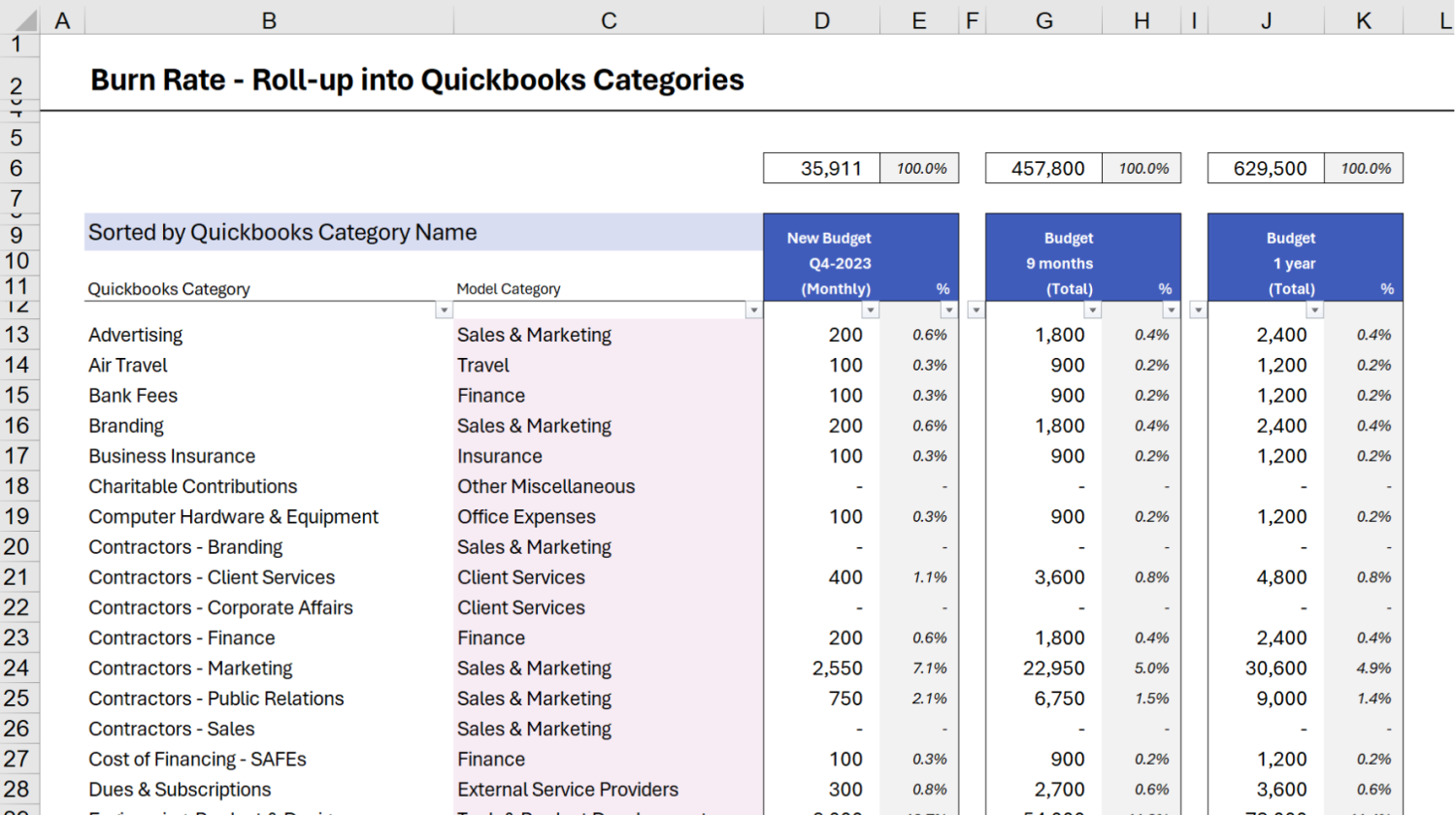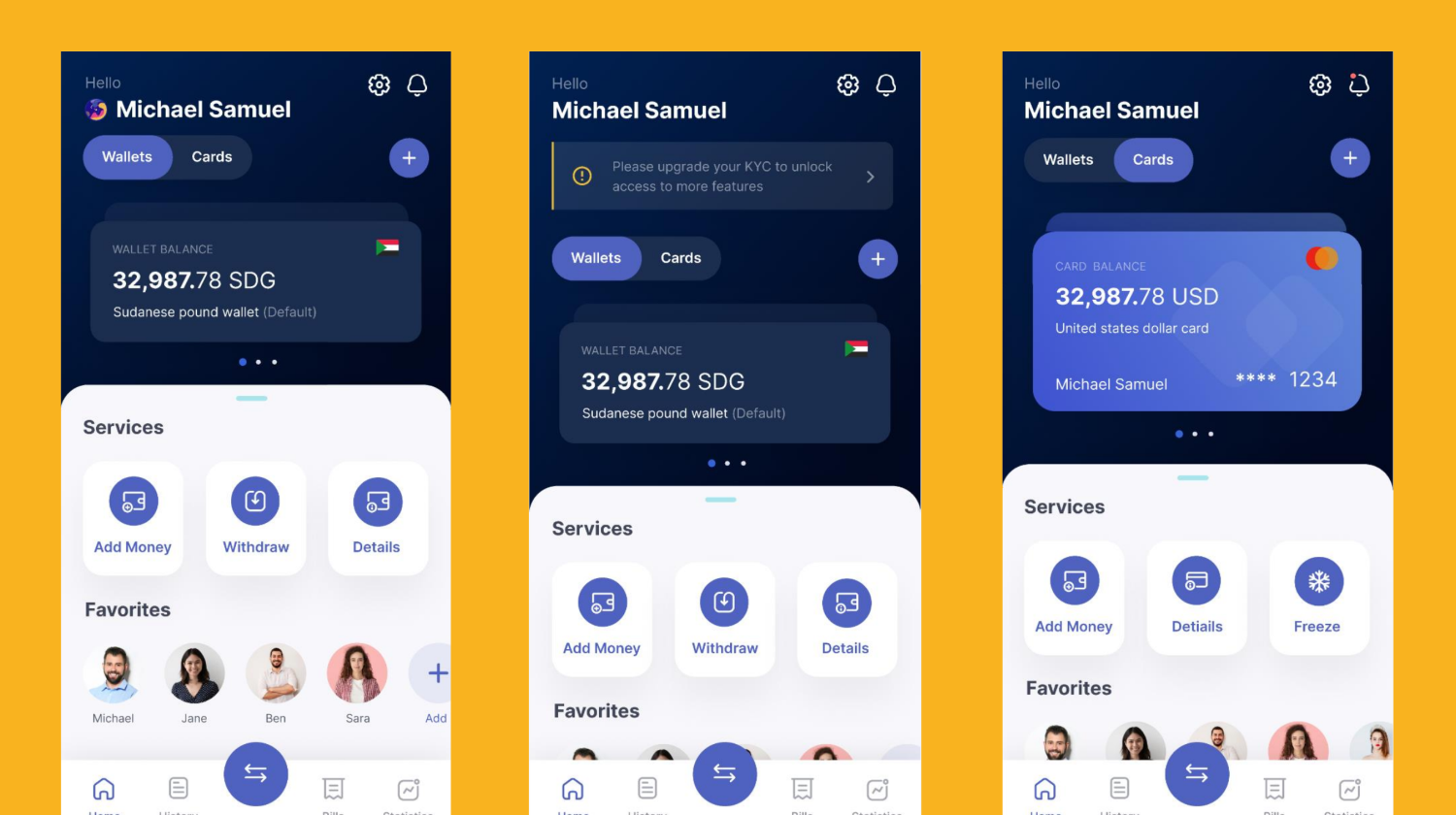Financial & Data Analysis
Fundraising financial & valuation model
AI Startup
Our clients are veterans of the SaaS industry who were launching their latest venture in private beta and needed a financial projection and valuation model for fundraising.
We went through their pricing, subscription, and expense assumptions in detail, discussing their operational plans and strategy. Combined with their expected capital raises and target valuations, we created a robust financial model to help steer their startup efforts.
Note: Dummy numbers have been used in the following screenshots to protect our clients’ confidentiality.
Financial projections
SaaS industry metrics
3-statement model
DCF valuation
EBITDA multiple valuation
Revenue multiple valuation
Investor returns analysis
Microsoft excel
Business strategy
Our process
We used a systematic method in collaboration with our client to develop projections that were aligned with their operational plans.
2.Revenue projections based on user growth, pricing, and churn rates
3.Fixed and variable expense projections based on plans for sales, staffing, etc.
4. Build the three statements
5. Calculate depreciation and amortization based on capex plans
6.Project cash flows including cash inflows from capital raising goals
7.Select valuation method(s) and determine WACC for DCF valuation
8.Create sensitivity analysis around assumptions in model and valuation
9.Review with client and iterate
Financial model assumptions
3-statement model
Monthly and quartely revenue and expense projects were used to create an annual 3-statement model including income statement, balance sheet, and cash flow statement. A depreciation schedule was also created using the client’s capital expenditure plans over the course of the model’s five year timeline so that EBITDA could be accurately calculated for valuation purposes.
Valuation analyses
Success stories
Let’s get started
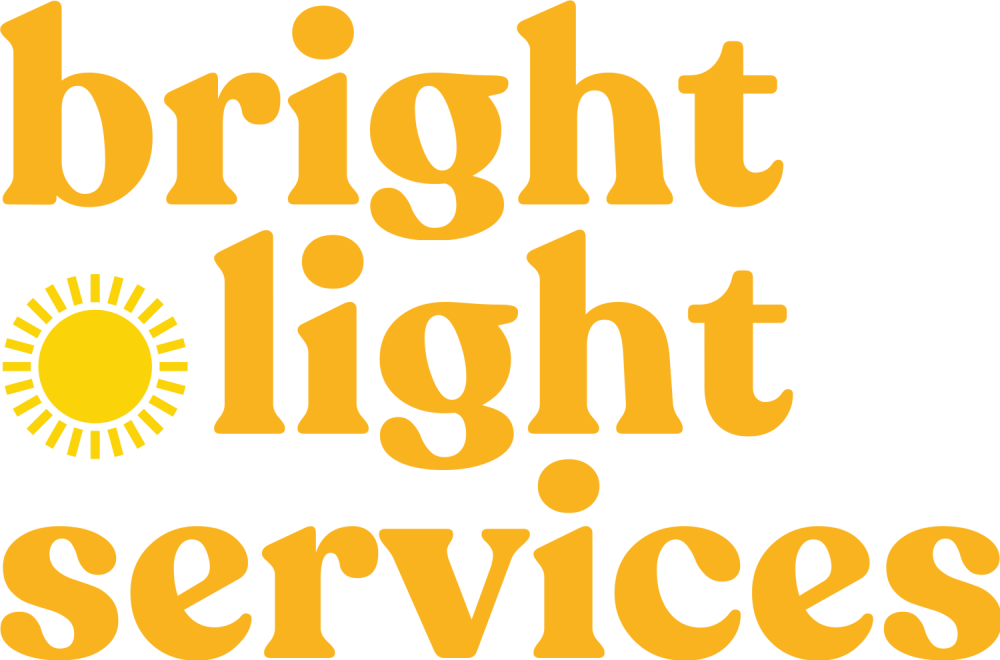


Success stories
Contact us
✉ contact@brightlight.services
⚲ washington, dc
Financial & Data Analysis
Fundraising financial & valuation model
AI Startup
Our clients are veterans of the SaaS industry who were launching their latest venture in private beta and needed a financial projection and valuation model for fundraising.
We went through their pricing, subscription, and expense assumptions in detail, discussing their operational plans and strategy. Combined with their expected capital raises and target valuations, we created a robust financial model to help steer their startup efforts.
Note: Dummy numbers have been used in the following screenshots to protect our clients’ confidentiality.
Financial projections
SaaS industry metrics
3-statement model
DCF valuation
EBITDA multiple valuation
Revenue multiple valuation
Investor returns analysis
Microsoft excel
Business strategy
Our process
We used a systematic method in collaboration with our client to develop projections that were aligned with their operational plans.
2.Revenue projections based on user growth, pricing, and churn rates
3.Fixed and variable expense projections based on plans for sales, staffing, etc.
4. Build the three statements
5. Calculate depreciation and amortization based on capex plans
6.Project cash flows including cash inflows from capital raising goals
7.Select valuation method(s) and determine WACC for DCF valuation
8.Create sensitivity analysis around assumptions in model and valuation
9.Review with client and iterate
Financial model assumptions
3-statement model
Monthly and quartely revenue and expense projects were used to create an annual 3-statement model including income statement, balance sheet, and cash flow statement. A depreciation schedule was also created using the client’s capital expenditure plans over the course of the model’s five year timeline so that EBITDA could be accurately calculated for valuation purposes.
Valuation analyses
Success stories
Apparel planning macro
Excel macros to analyze and generate forecasts used for inventory control and planning.
Expense & burn rate analysis
An in-depth analysis of expenses from inception to date and burn rate calculation.
Mobile money application
Leading the strategic planning and technical development of the CASH+ mobile app.
Let’s get started


Contact us
✉ contact@brightlight.services
⚲ washington, dc




